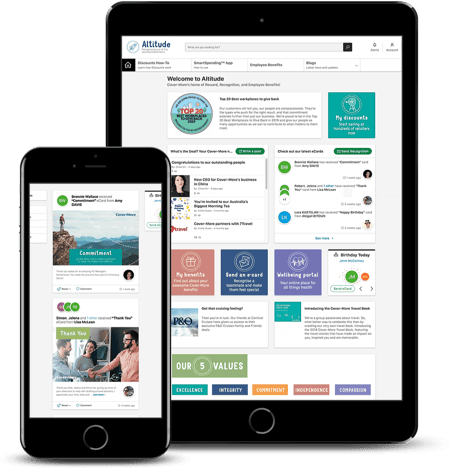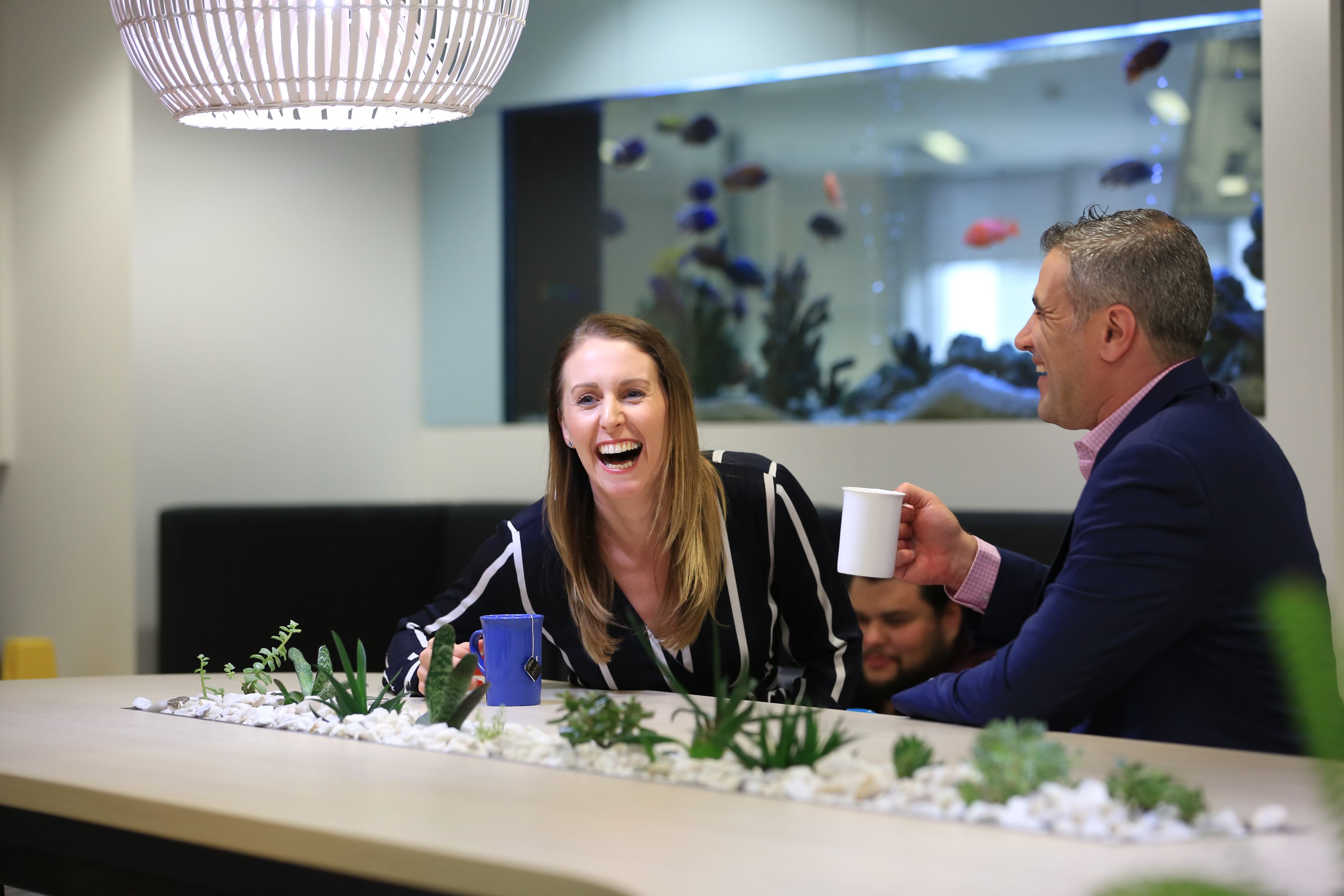3 min read
Earlier this month, Chloe Morley, Employee Experience Manager at Cover-More Group, joined Reward Gateway to discuss the organisation's proactive approach to developing a strong Employee Value Proposition.
Last time, Chloe talked about how Cover-More designed its engagement program to proactively strengthen culture and improve customer service by engaging employees. Below, she shares her tips for designing, launching, and maintaining the momentum for an employee engagement programme.
Q: Your background is design and advertising, which puts you in a great position to talk about not just bringing your employer brand to life, but about developing and highlighting your employee recognition or programme brand. What are some of the initiatives your team have focussed on to achieve that?
CM: A lot of organisations tend to focus on getting the launch of the programme right and might forget that when it’s time to securing budget later, you need to demonstrate success over a sustained period of time.
If you're hoping to drive behavioural or cultural change, that isn't something that is going to be achieved in a four to six week launch campaign, that's going to be something that's for a number of years. So what are you doing to keep the programme alive and how are you setting it up for success initially?
It really starts with deciding how you’re going to measure success – that really helps you determine where you focus your efforts first. Are you focussing efforts on the mechanics or the recognition framework, or will it be on marketing your programme?
The two components do go hand in hand, because you can market the heck out of a recognition programme, but if it's fundamentally flawed in the way the framework is designed, then it falls down and it won't be successful. But equally, you might have the best recognition programme framework ever, but if no one knows about it, or isn't engaged with it and they feel like it's irrelevant to them, equally it's going to fall down too.
But I think it's a matter of finding the balance between designing and marketing the programme. How your organisation achieves that comes down to how you’ll measure or report on success in the short term and long term. At Cover-More, we made sure the reward and recognition platform we chose ticked the “mechanics” boxes – it could deliver the workflows and functionality we wanted for recognition, communications and discounts. That allowed us to focus on the marketing side of things.

With a significant part of our employees in the millennials bracket, we knew a big motivator is transparency. We had to acknowledge the previous recognition programme focused on tenure and people staying with the business, so the existing perception from our people was that recognition had become a bit tokenistic. So initially, success meant being able to change the attitude of our people.
We also wanted to focus on establishing a long-term culture. So instead of making it out that we were introducing a “brand new shiny programme," we intentionally positioned the programme as “business as usual,” but with a new wrapper. This approach guided our approach to launching the programme and also helped our people with the transition – they knew from the outset that we were expecting recognition and discounts to be part of their everyday work life, and that it wasn’t going to disappear after a few weeks.

Want to find out how you can bring your company purpose, mission and values to life and enhance the customer experience through strategic reward and recognition? Talk to one of our consultants today.

 Joy Adan
Joy Adan



